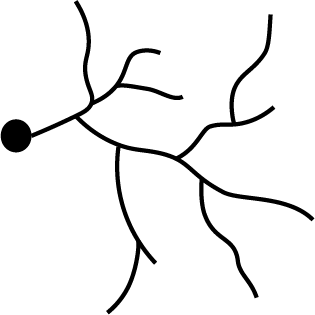
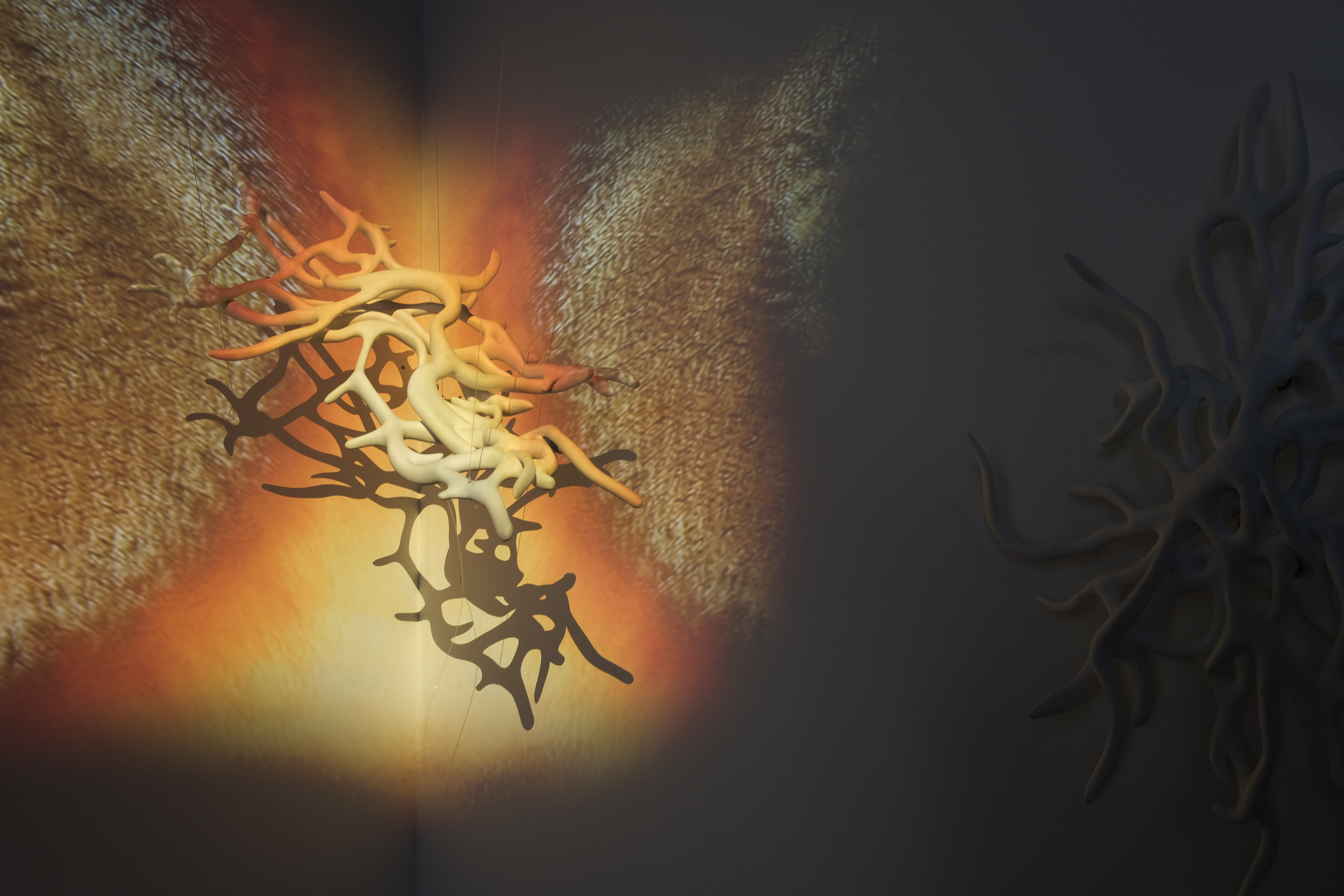
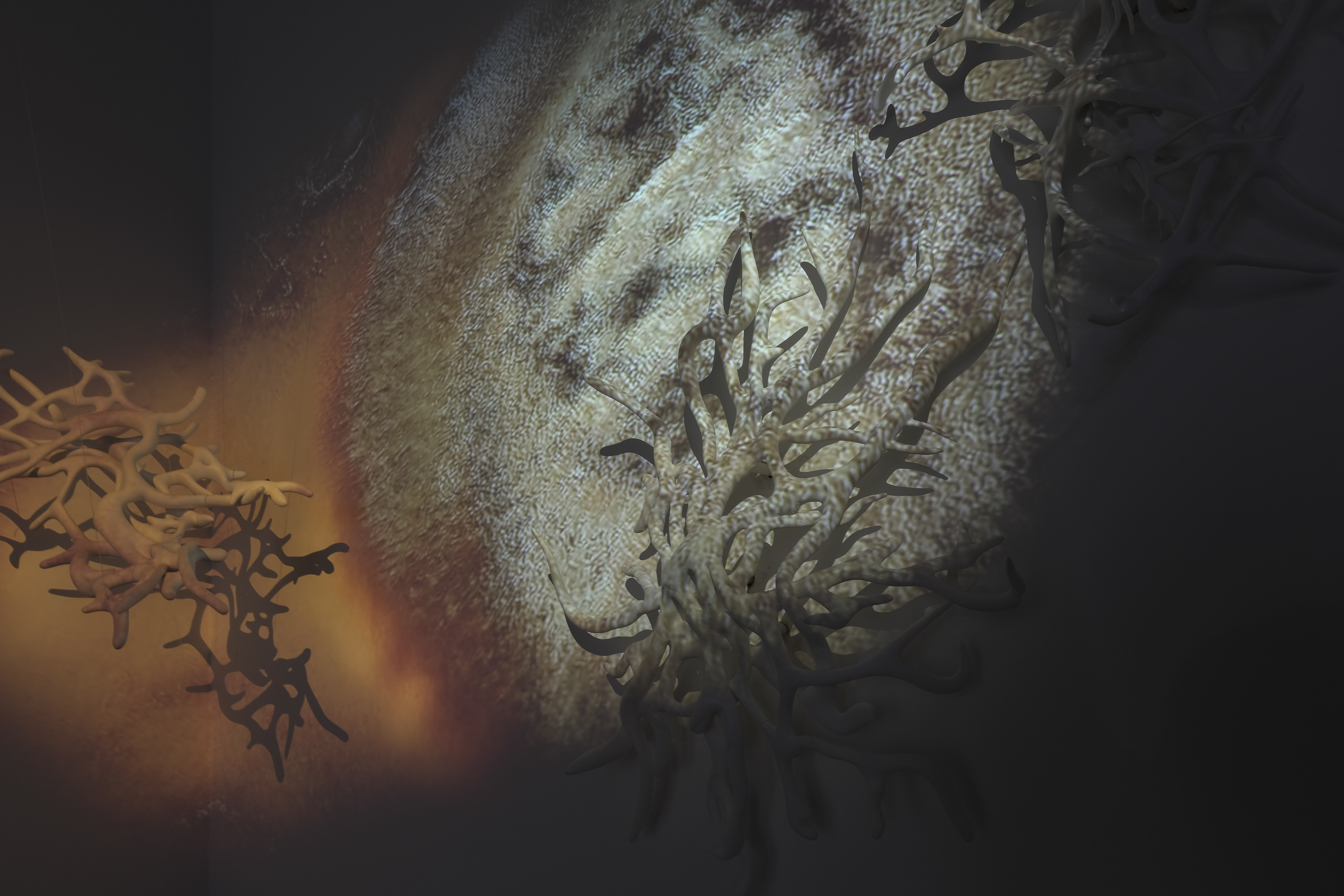
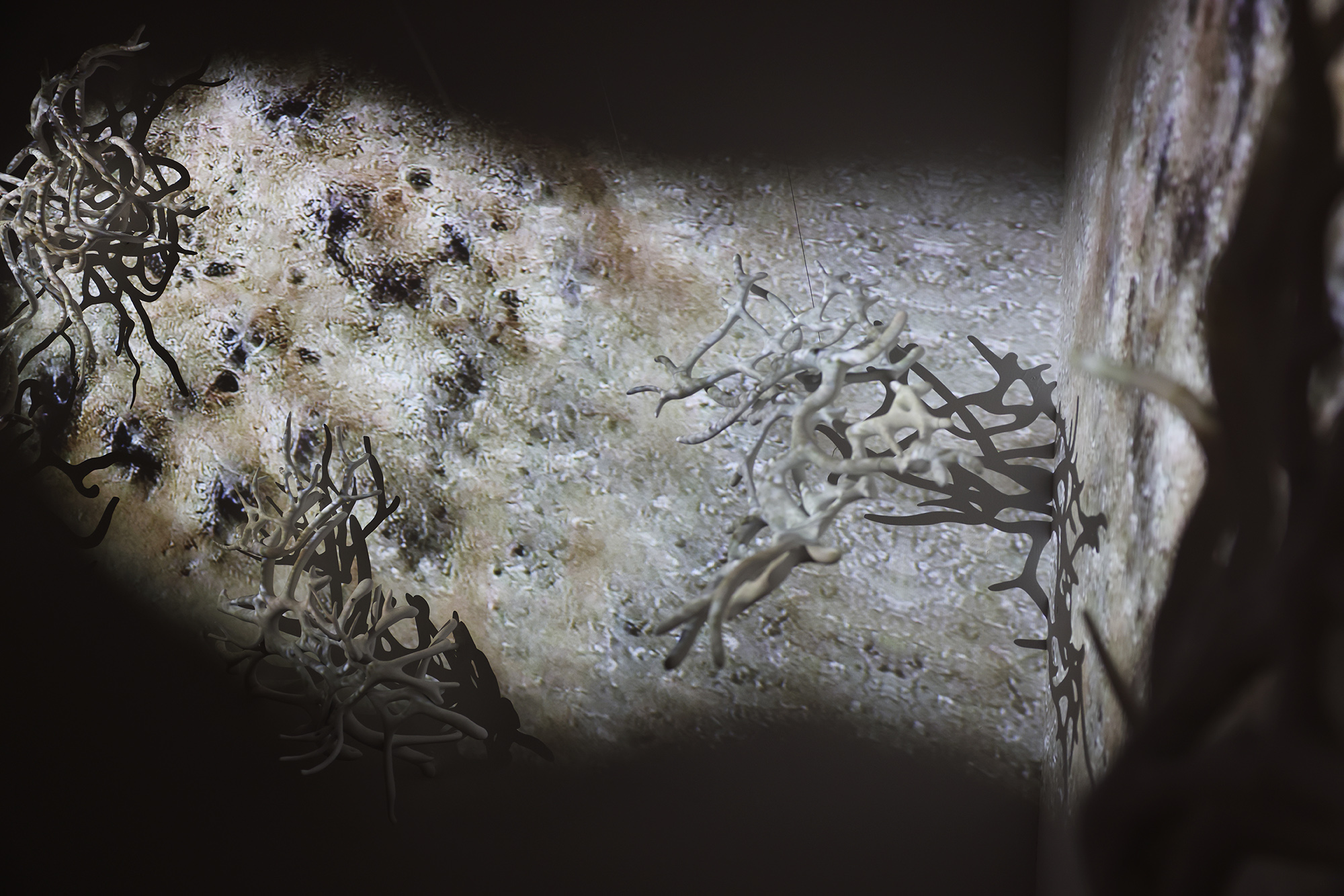 Installation view at exhibition “The Language of Mushrooms”, Contemporary Gallery Kunming (CGK), Yunnan, 2022.
Installation view at exhibition “The Language of Mushrooms”, Contemporary Gallery Kunming (CGK), Yunnan, 2022. 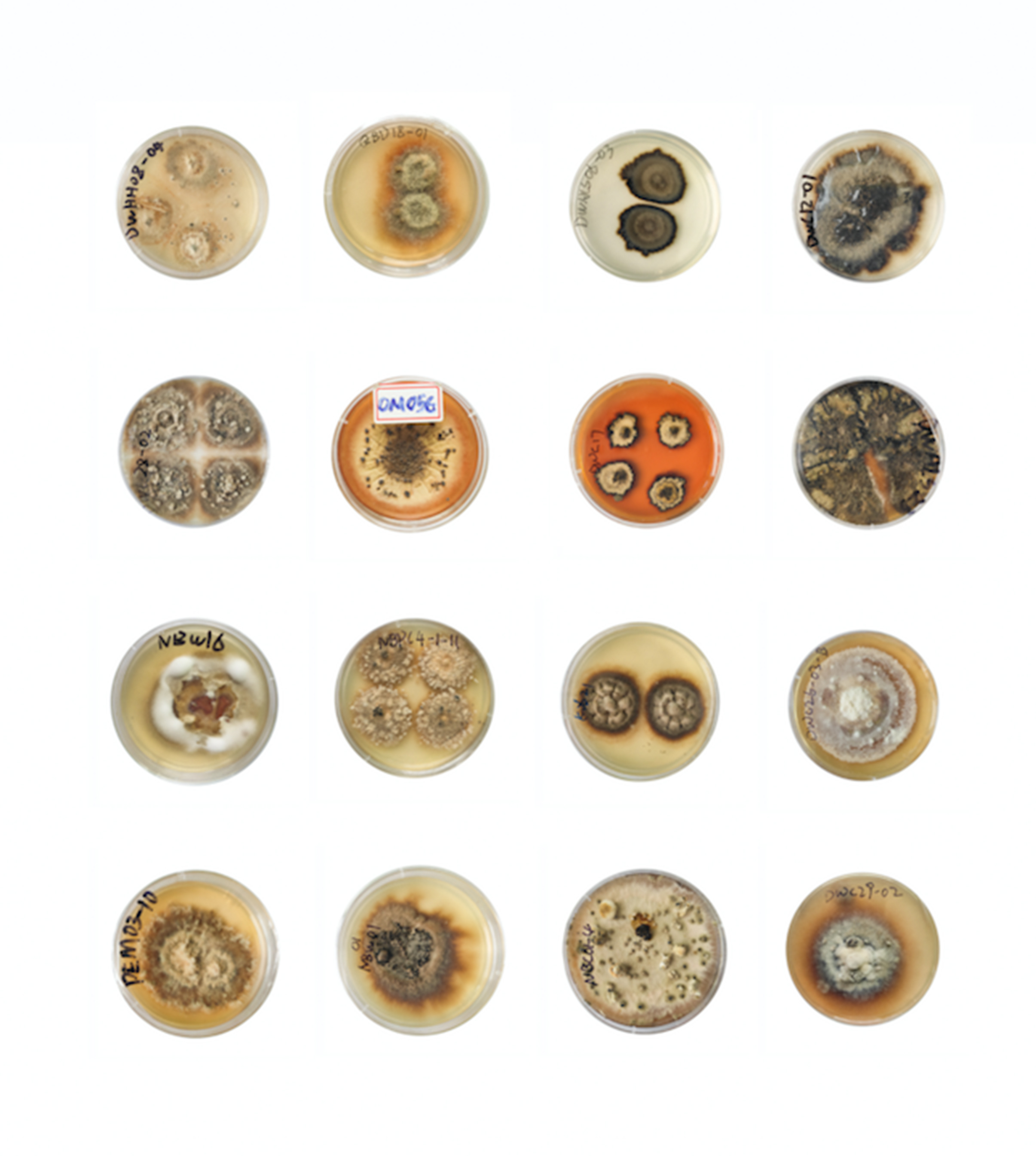
Fungal samples extracted from plants in agar medium at Kunming Institute of Botany, Kunming, China.
Horizonless External Gut
2022
3D-printed resin sculpture
Dimensions variable
To Wander Beneath and Beyond
2022
8 minutes video
This work is commissioned by Contemporary Gallery Kunming, and developed in collaboration with Peter Mortimer’s laboratory at the Kunming Institute of Botany, Chinese Academy of Sciences. Artwork produced and presented with the support of M Art Foundation.
Read more about this work
